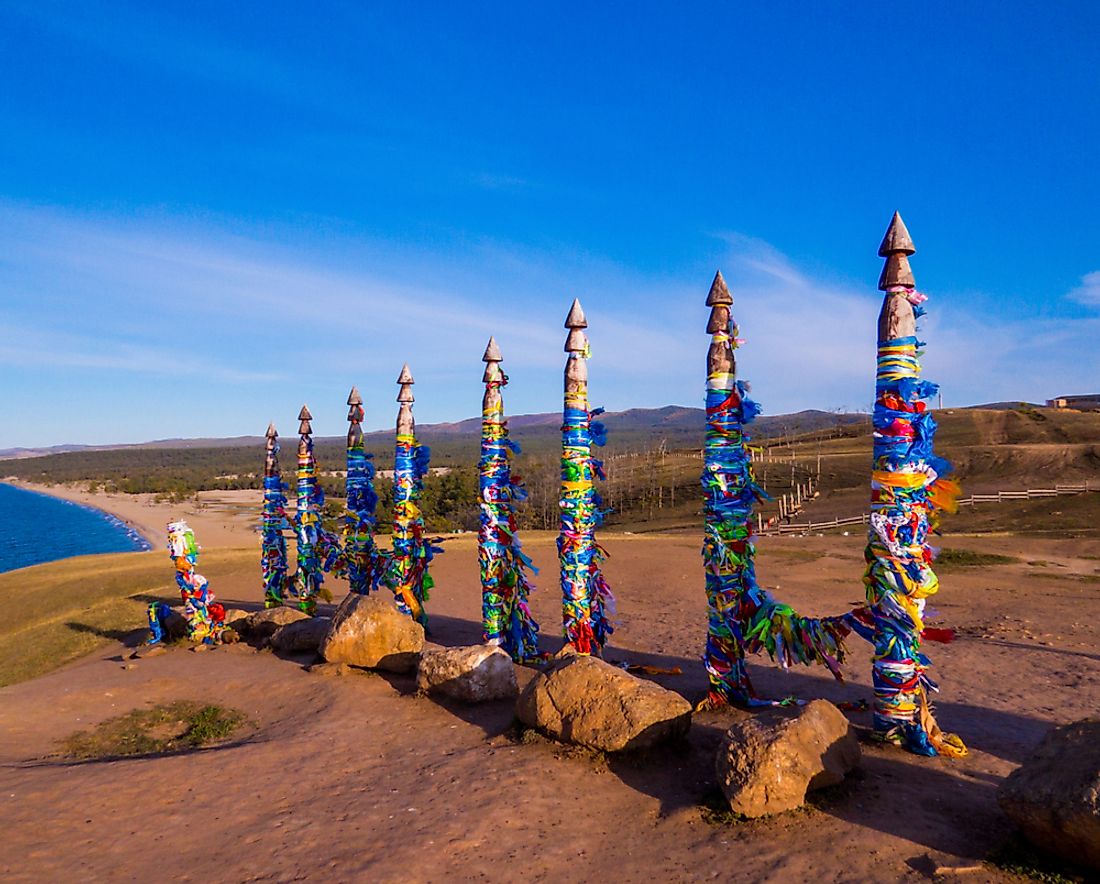Who Are The Buryat People?

5. Description and Location
The Buryat (or Buriat) people are spread throughout the Asian Region of Siberia. The majority of their groups have customs that are descended from the Mongols. The largest numbers of Buryats today, about 500,000, can be found proximate to the city of Ulan-Ude in Buryatia of the Russian Federation, although other, more traditionally nomadic groups prefer the countryside. Their native tongue is also called Buryat language, which is itself a central Mongolian language. This language is classified by UNESCO as an endangered language. Some distinguished modern Buryats known worldwide are Agvan Dorjiev (a Buddhist monk who tutored the 13th Dalai Lama), Balzhinima Tsyrempilov (a Russian archer), Yuriy Yekhanurov (a former Prime Minister of the Ukraine), and Valéry Inkijinoff (the French actor).
4. Historical Role
Traditionally, the Buryat were nomadic peoples who kept camels, sheep, goats, cattle, and horses, which they used as beasts of burden, for traveling upon, and to produce meat and milk for sustenance. They were also known for being hunters, fishermen, and gatherers. Their social structure consists of a noble class and a commoner class, and, in earlier times, they also held slaves. They followed the Buddhist belief system, while some engaged in shamanic practices. The Mongol Buryats leaned more towards Buddhism, while many of the Western Buryats had converted to Orthodox Christianity. There are about 70,000 Buryats in China, 440,000 in Russia, and 46,000 in Mongolia. They trace their genetic tree to ancestors from Mongol, Turkish, Samoyed, and Tungus ethnic groups. Today, they maintain their ancestry by clan and feudal affiliations. The area around Lake Baikal is one of their places of origin.
3. Housing And Settlements
The settlements of the Buryat people were mostly temporary, similar to others living Mongol nomadic existences. They also have the 'yurts', which are similarly constructed of the same materials as the Mongol yurts using wooden frames and felt coverings. However, Buryats in the Taiga lived in conical huts called 'chum', which are fashioned from animal hides. The Lake Baikal Buryats were influenced by the Cossack dwellings in the neighboring countryside. The Cossacks' Russian-style frame huts were often adopted by these Buryats. However, many modern Buryats have now adapted to city life in apartment buildings as well. In the countrysides of Siberia, many Buryats still prefer the izba huts of the traditional types, adapted from the Russian frame huts.
2. Arts and Cuisine
Buryat arts and culture provide an interesting facet of storytelling, riddles, and proverbs. The ancient Buryat arts of metalworking and jewelry-making still exist today. Leather goods were also popular among Buryat tradesmen, and wooden sculptures of Buddhist figures were also crafted for religious purposes. Dishes were made out of wood, including bowls for dining and food storage containers. Buryat cuisine is largely a mix of milk and other dairy products, foraged plants, and meat, reflective of their nomadic herding lifestyles. The peak milking season produced large quantities of high-energy butter and cheese that helped support their daily work. One unique Buryat culinary specialty is a vodka which is distilled from milk, roots, berries, and flour. Buryat cuisine was also influenced by shamanistic practices. One example of this is "kumys", which is fermented horse's milk, and a drink that is supposed to have healing powers.
1. External Threats and Territorial Disputes
Threats to the religious Buddhist beliefs of the Buryat people occurred in the late 1930s, as the Communist government destroyed Buddhist icons and monasteries. Problems with the Buryat people have long since been largely resolved after the Buryat purges waged by Stalin in 1937, though historical scars and memories are slow to fade in the face of such atrocities. Today, twelve monasteries have been rebuilt and opened for worship and, in 1991, the Buryat communities celebrated the 250th anniversary of the 1741 decree by Empress Elizabeth of Russia, which recognized the Buryat community and their Buddhist beliefs. The Republic of Buryatia was given sovereignty in 1992 by the new Russian government following the collapse of the Soviet union. Modern Buryats now enjoy assistance from the Russian government, and timber and fishing are two of the major industries supporting the Buryat communities of today.











